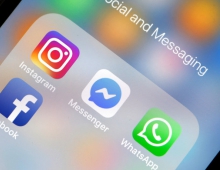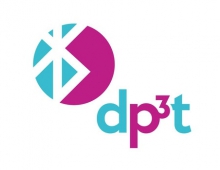
Google Says Assistant is Used by More Than 500 Million People
Available in more than 90 countries, the Google Assistant now helps more than 500 million people every month to get things done across smart speakers and Smart Displays, phones, TVs, cars and more, according to Google.
At CES, Google announced new features that make the Assistant more helpful throughout your day when you’re at home, in the car or on your phone.
Google has come a long way in making it easier to set up smart devices with the Google Assistant, and will continue working to make the experience faster and devices easier to find through your phone. When you set up your smart device through the manufacturer’s app, you’ll receive a notification on your Android phone or see a “suggestion button” when you open up the Google Home app that will prompt you to connect the device with your Assistant. You’ll then be able to complete set-up in just a few taps without needing to re-enter your account credentials.
Google also wants to give you more granular control of your smart home devices. With a new feature called Scheduled Actions coming out later this year, you will be able to ask the Assistant to turn on/off or start/stop a compatible smart device at the time of your choosing. For example, you can say, “Hey Google, run the coffee maker at 6 a.m.” And from within the Google Home app, you can control more than 20 new devices, including AC units, air purifiers, bathtubs, coffee makers, vacuums and more, all from one place.
This year, you’ll find more smart devices from top brands that will work with the Assistant, including August Smart Locks, Philips Hue HDMI Sync Box, Telus Wi-Fi Hub routers, GE Appliances Ultrafresh Front Load Washer, MOEN shower, D-Link Outdoor Wi-Fi Spotlight camera, VIAROOM Smart, Somfy TaHoma Hub, Yeelight Staria Bedside Lamp Pro and MerossSmart’s garage door opener. For example, you can create an immersive lighting experience while you’re watching a movie by using the Assistant to turn on the Philips Hue HDMI Sync Box, which will sync your Philips Hue smart lights with your TV, coming later this Spring.
Google is also trying to make Assistant better help households stay organized and connected.
With household notes, you will soon be able to clear out the clutter of paper notes around the house and ensure notes are seen in one central location by creating digital sticky notes with the Assistant on your Smart Display. Anyone at home can create or view these notes without needing to sign in. For example, as you head out the door in the morning, you can leave a note informing other household members that you already fed your pet. Simply say, “Hey Google, leave a note that says I already fed Max breakfast.”
You can also put your most important contacts on “speed dial” with household contacts, so that anyone at home can quickly make calls on your speakers and Smart Displays. Once set up, anyone can dial your neighbor Sarah by saying "Hey Google, call Sarah" or by tapping on Sarah's name on your Smart Display's household contacts list. Both features will be rolling out later this year.
Google is previewsing at CES a new experience that enables natural reading of long-form content. Unlike traditional screen readers, this experience is built on new voice datasets to create more expressive and more natural sounding voices, so it’s easier to listen for a longer period of time. There are many potential ways in which this can be helpful, but one area Google is exploring is reading webpages with long-form content on your phone—like a news article, blog or short story—out loud. From your Android device, just say “Hey Google, read it” or “Hey Google, read this page” when you’re viewing an article. The content can be translated into 42 languages, such as Hindi, German or Spanish. We’re also looking to include auto-scroll and text highlighting capabilities that help users read the text as it’s being read aloud.
Interpreter mode, a real-time translation feature for your phone, Smart Display or smart speaker, allows people to have free-flowing conversations with each other—even if they don’t speak the same language. Starting today, businesses around the world can bring interpreter mode to their guests through Google's partners Volara and SONIFI. As part of this new solution, Google is expanding the technology to new hotels, airports, sports stadiums, organizations aiding humanitarian efforts and more.
Google Assistant is already available on more than 1 billion devices. And soon the Assistant will be coming to lots of new smart displays, speakers, headphones and soundbars from Acer, Aftershokz, Anker Innovations, Belkin, Cleer, Harman Kardon, Konka, JBL, Lenovo, Philips, Seiki and LG.
TVs are another important place for people to use the Assistant. Google has updated Android TV to make it easier for TV manufacturers to build far-field mics into their TVs—starting with the latest models from Hisense and TCL in the U.S.—so it works like any other Assistant-enabled smart speaker. Whether your TV is turned off or you can’t find the remote, you can use the Assistant to access media and entertainment, get answers and control the TV with your voice. The Google Assistant will also be available on Samsung’s new voice-enabled Smart TVs launching in 2020.
With the Google Assistant built into select cars with Android Automotive OS and all cars with Android Auto compatibility, you can make the most of your time in the car. Late last year, Volvo Cars revealed its first electric car, the Volvo XC40 Recharge, would have a new infotainment system, powered by Android with the Google Assistant built in. BMW also recently announced wireless Android Auto support.
Having the voice-controlled technology on over half a billion devices far outstrips main rival Amazon.com, which said last year that more than 100 million gadgets had been sold with its Alexa digital assistant. However, Google’s Android operating system runs on roughly 2.5 billion devices. That suggests the Google Assistant either isn’t available with some of these products, or that many people aren’t using the service.
Google, Amazon, Apple and Facebook have been battling to get their voice-controlled digital assistants in front of as many people as possible. For the tech giants, voice is the latest frontier for pulling people into their ecosystems, collecting data on them and then selling services or advertising based on that information. As smartphone growth wanes, voice assistants become more important.
Google and rivals have been under fire for privacy when it comes to this new technology. The companies often use human contractors to transcribe audio clips from people’s requests as a way to improve the quality of the AI algorithms. But consumers weren’t always aware.
As part of its announcement, Google said it was adding more privacy and security features for the Assistant.
Google says that the Assistant is designed to wait in standby mode until it is activated, like when you say “Hey Google.” And when it’s in standby mode, the Assistant won’t send what you are saying to Google or anyone else. By default, Google says it does not retain your audio recordings and you can decide if you’d like Google to keep your audio "to make Google speech products more helpful to you and better for everyone."
You can even access Google’s privacy controls with the help from the Assistant. Ask questions like “How do you keep my information private?” to get answers to the most common privacy and security questions. And with just your voice, you can delete Assistant activity from your Google Account by saying things like “Hey Google, delete everything I said to you this week.”
At CES, Google also announced it is adding two new voice actions for people to easily control their privacy, such as “Hey Google, that wasn’t for you,” which lets you tell the Assistant to forget what it heard if an unintended activation occurs. You can also ask “Hey Google, are you saving my audio data?” to learn about your privacy controls and go directly into the settings screen to change your preferences.





















